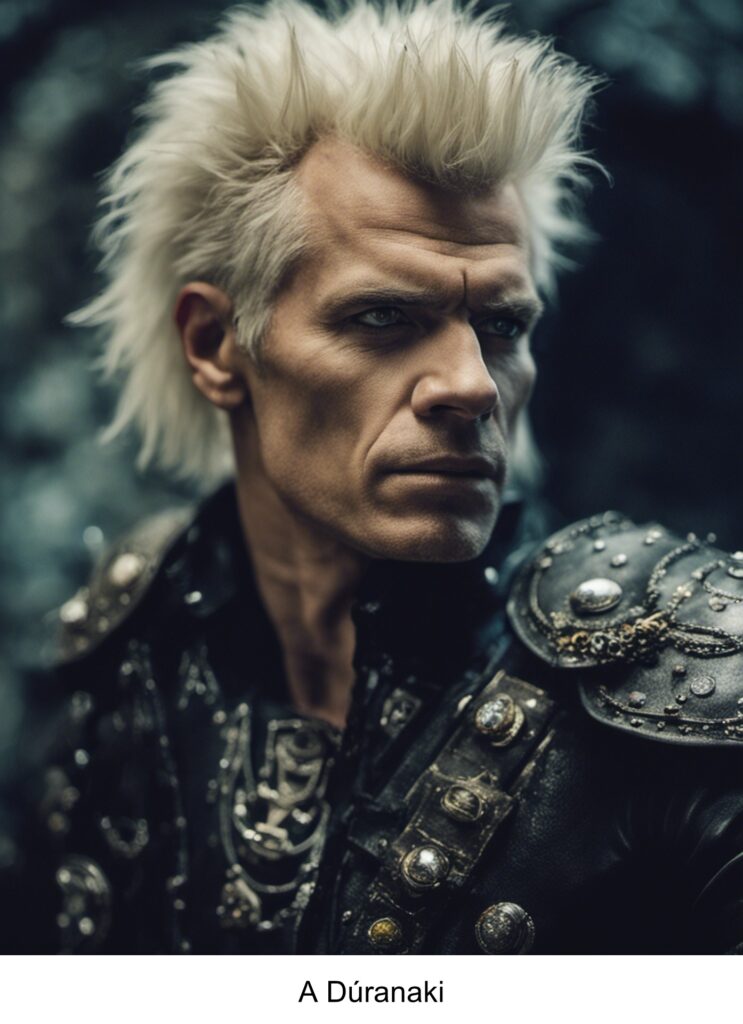
Of course the subject of A.I. is all the rage in our society nowadays, and there has been a lot of discussion about using this tech in content creation in roleplaying games. Recently, Wizards of the Coast banned the use of AI generated art in their products. But make no mistake about it, AI content is here to stay and will quickly become a invaluable tool artists, designers and writers. The wave is here and there is no stopping it.
I’m not going to make the argument against AI content creation; many better informed people have done so online and in public forums. I don’t disagree with them. And for now, I certainly support the arguments against using AI in monetized products; but what about fan made material, open source products and free OGL supplements?
First, let’s demise two types of basic content in RPG’s: text and art. Can AI generate basic copy for adventure hooks and seeds, or even fully fleshed out adventure plots? Sure, but they still feel a bit flat, derivative and lacking some “flair”. But that content will get better, more setting and game rule specific over time. But artwork and graphics are very different. My own self-publishing experience has shown me that artwork (illustrations, diagrams, floorplans and maps) are a major obstacle for me to put out average quality product. I don’t have the skills and I don’t have the time or experience to properly commission art for a product. For many amateur writers or small publishers good artwork is just not financially feasible or pushes the cost of publishing a product up to the point there is no profit making ability.
What about Shadow World? A rich setting with significant amount of content, but it’s author now passed away. Many of us believe that simply reorganizing and compiling existing information could make some of Terry’s products better and more user friendly. For example a Jaiman source book or a new, fully comprehensive edition of the Master Atlas. I’ve blogged about these ideas for years, but given the overall pace of SW publications and ICE’s current focus on RMU and HARP it’s getting less likely that SW will continue on in any official capacity or with substantial new publications. But AI can leverage existing SW material and IP and accelerate a publishing schedule that would introduce new SW books that are derived from CANON material.
My brother Matt (Vroomfogle) has started to deep dive into AI capabilities and see how they might be used for his own SW and Rolemaster gaming, but perhaps as an assist to generating some new material as well.
From Matt on his first endeavor:
I ran this campaign with the boys online around Covid…we actually played quite a bit, with maybe a couple dozen sessions. Some of them took notes which was pretty spotty, random, and didn’t make much sense. Well I combined the notes along with my own notes, and threw that into ChatGPT to get what was a pretty decent narrative for each session.
I then find myself wanting to expand upon descriptions of NPCs, groups, organizations….e.g., throw all the text about Yinka in ChatGPT to create a 1 paragraph summary.
Then, I went one step further and started creating images with Stable Diffusion….
This is all because we’re picking up the campaign again and I needed to summarize the story so far. Now, this still took a fair amount of work, but I finally got it together, in 37 pages!
You can check out the results on the RMForums. This site doesn’t seem to support the file size.
But note the artwork. Barring the town map and the map of Jaiman, this was all AI generated art. Of course they are different styles: watercolor, line drawing, colored etc but it certainly provides a look at the opportunities AI may provide for amateur creators. So what types of projects might AI assist in for Shadow World?
- Shadow World Herb Supplement. I’ve been working on fleshing out a supplement on SW herbs and wanted to add artwork for each plant. AI would make that very easy–and quick!
- Shadow World Races – Illustrated. Based on previous comments on blogs and forums I think there is a real demand for illustrations depicting the various SW races. There are a lot them, and I think it can be hard to visualize them without a reference point.
- The Nomikos Library. What would you get if you partitioned a vault, assessable to AI and uploaded the full SW Timeline and supporting historical materials? Then you wrote code to create a user portal where you could “Ask Andraax” any question about SW. That would be a powerful tool and perhaps add some differentiation and user value to the Shadow World setting.
These are just 3 simple products that could be developed without messing with CANON. They would be done quickly and at a fairly low cost! Combined with PoD and Drivethrurpg it could revitalize SW in a way that hasn’t been possible.
What are your thoughts? Check out Matt’s work on his “Legacy of the Y’kin” campaign over on the forums.







